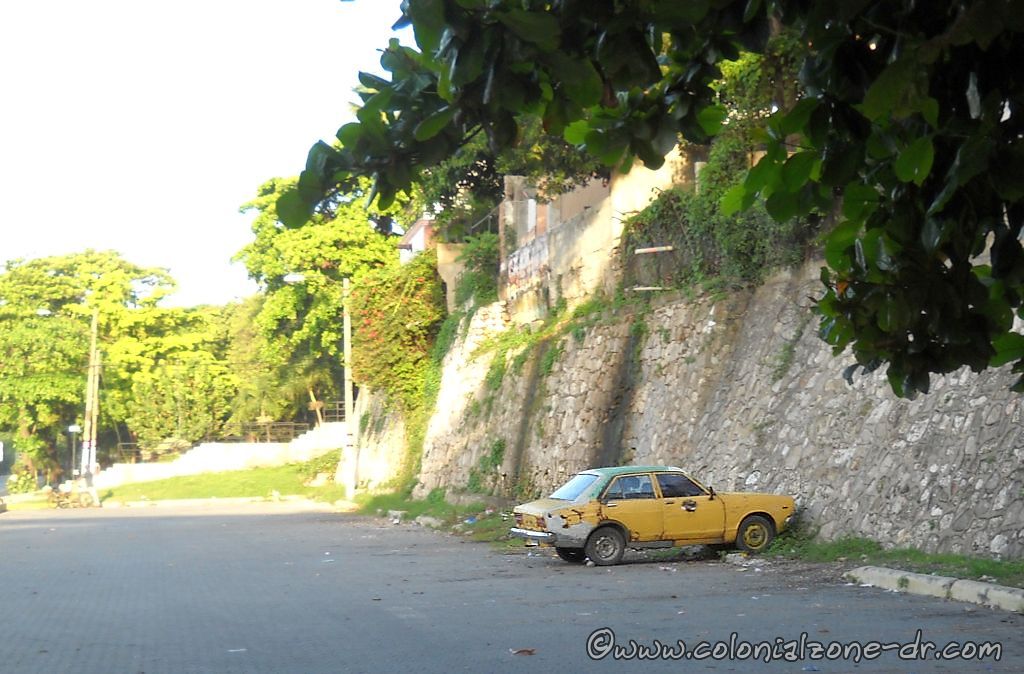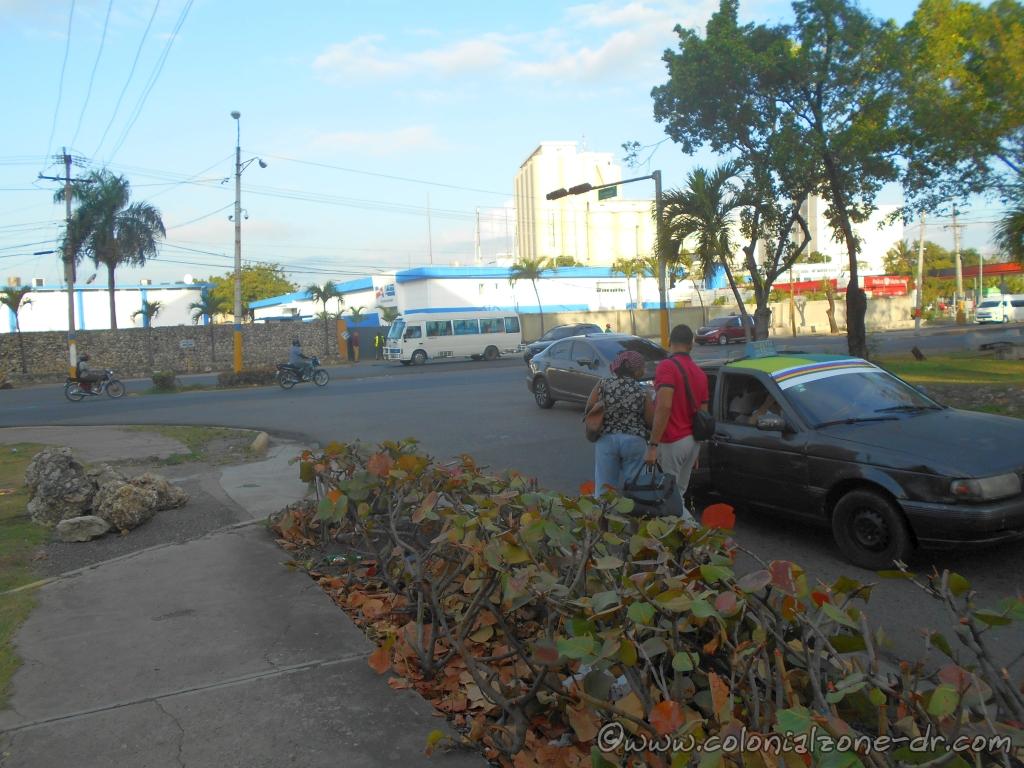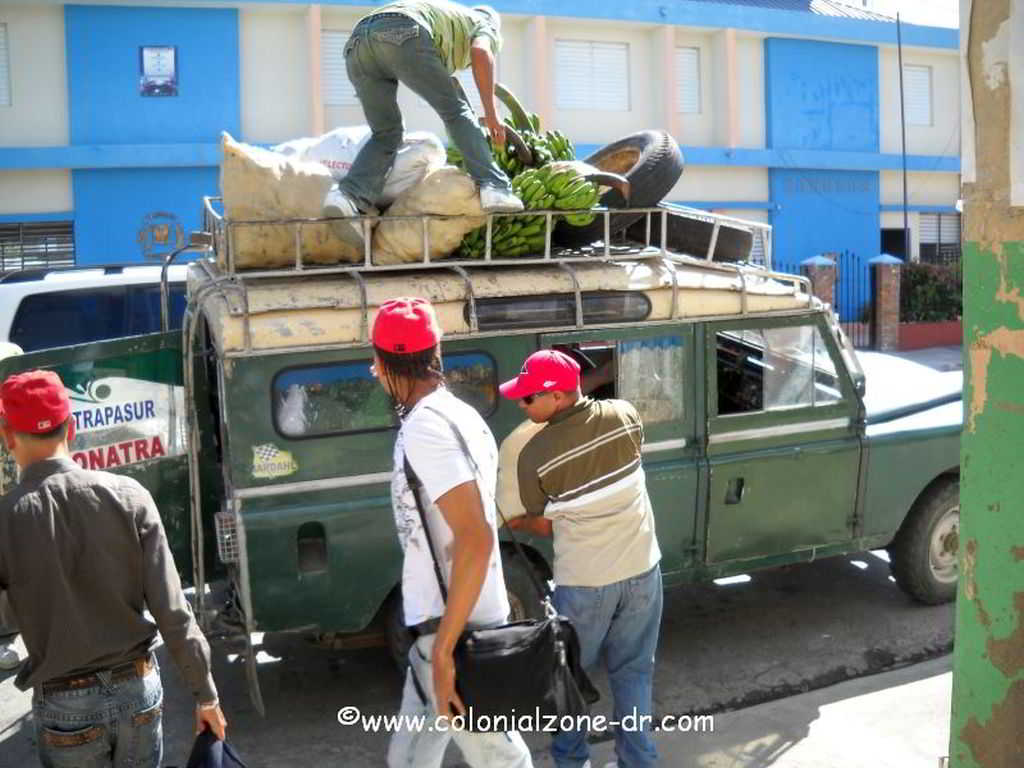Alternative Types Of Public Transportation
Large busses are always available for destinations but for local travel when walking just will not do there are many different types of public transportation. Some take some time to learn but for local inexpensive travel, they are the go-to form of transportation.
Public Car | GuaGua |Motoconcho

Public Cars
Public cars also called carros publicos, carritos or derechos are public taxis and usually cost $25 pesos (5/18) (prices have been going up as the gas prices raise).

In Santo Domingo these cars will have a green or a yellow top and some will be painted half and half. An official public car should have an official ID (either hanging from the mirror or on the visor) with a picture and ID number of the driver.
The cars usually have signs (similar to taxi signs) on the roof or door of the car, stating on which route or road they travel. They all have a specific route they travel. They drive all day the same route, round and round. The carritos stop often wherever passengers want to get in or out.
If you stand at the side of the road they may honk as they drive towards you if their horns are functioning that is. They will point their finger in the direction they are going. You can signal with a short wave down beside your leg or wave for them to stop or shake your head no and they will pass by. If they are full of humans (2 passengers in the front seat and 4 in the back) they will drive right by you. If they are not full they will stop and you can hop, more like climb, on in.

You can let the driver know where you want to get out by telling them your destination or by simply tapping their shoulder / pointing to indicate where. Say “Déjeme” for “Let me out”, “Dónde pueda” to tell them to stop “wherever you can” to let you out. Say “En la esquina” for them to “Stop at the next corner”.
This is not the most comfortable form of transportation but it is very inexpensive. You will be sat on, poked, squeezed into a small, usually hot comfy car. 4 passengers in the back, 3 in the front. You need to get out and let others in and out as needed.
I highly recommend
taking this form of transportation in the night.
At first, this is a confusing form of travel. But when you understand the routs and pricing it can be a very interesting way to get around. A real Dominican experience.
Guaguas

The guagua is another cheap form of Dominican transportation. A good way to get around but only if you can understand the system.
The routes are usually posted someplace outside the van. The driver’s assistant, or Cobrador (fare collector), will be hanging out of a window or side door waving to see if they should stop. Trying to solicit a passerby to ride. Some even fight over a fare.
These vans are usually in very poor condition and you never know what you could be sitting next to on your ride. They hold as many people they can fit, maybe a chicken or two, and anything else that someone can get through the door.
There are no official stops or schedules that they follow. They will stop anywhere along their route, dropping off and picking up passengers. When the route ends there will be another to pick you up and take you farther in your quest. If you are not sure where to go just ask. Usually, the drivers assistant and the people taking a ride are very helpful.
The cost of this mode of transportation can start at about $25 (1/18) pesos. Make sure to have the correct change as drivers usually do not give change. They also like to convince tourists that they get a tip, which is not true.
Motoconcho

Motoconchos are yet another form of public transportation for persons who are a little braver. They can take you directly to your destination. You will see many of these motorbikes carrying as many people as they can possibly fit. They also carry every item you could imagine, chickens, pigs, refrigerators and I have even seen one towing a car.
A motoconcho is a very inexpensive way to get around locally. The cost can be from $50 (1/18) pesos and up, depending on how far you want to go and if it is day or night.
Most motoconcho drivers will wear a yellow safety vest that states they are official drivers. They do not offer helmets. This mode of transportation can be a little dangerous as these brave drivers weave in and out of traffic trying to get to their destinations with not having to wait in the lines of cars. But, if you want to get around the campos or smaller towns this form or transportation is very fast and easy.
The smaller towns usually have moto taxis on all major street corners.
To read about helpful transportation tips.
Important phone numbers to take with you when you travel.
To read a funny story about Dominican Drivers written by DR Gringa

